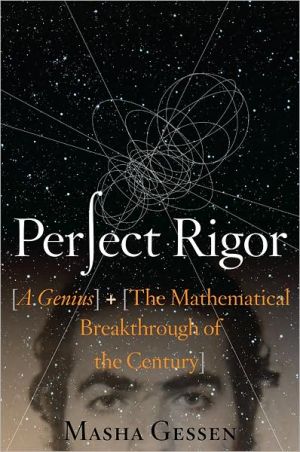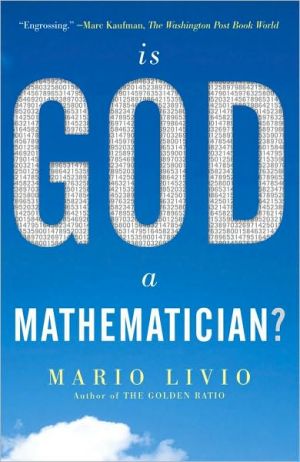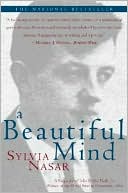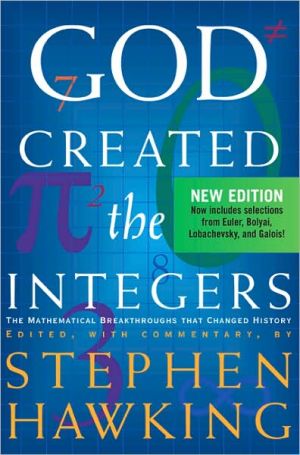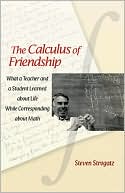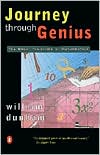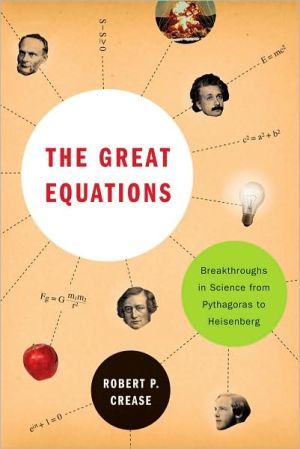Perfect Rigor: A Genius and the Mathematical Breakthrough of the Century
A gripping and tragic tale that sheds rare light on the unique burden of genius\ In 2006, an eccentric Russian mathematician named Grigori Perelman solved the Poincare Conjecture, an extremely complex topological problem that had eluded the best minds for over a century. A prize of one million dollars was offered to anyone who could unravel it, but Perelman declined the winnings, and in doing so inspired journalist Masha Gessen to tell his story. Drawing on interviews with Perelman’s...
Search in google:
In 2006, an eccentric Russian mathematician named Grigori Perelman solved one of the world’s greatest intellectual puzzles. The Poincare conjecture is an extremely complex topological problem that had eluded the best minds for over a century. In 1998, the Clay Institute in Boston named it one of seven great unsolved mathematical problems, and promised a million dollars to anyone who could find a solution. Perelman will likely be awarded the prize this fall, and he will likely decline it. Fascinated by his story, journalist Masha Gessen was determined to find out why. Drawing on interviews with Perelman’s teachers, classmates, coaches, teammates, and colleagues in Russia and the US—and informed by her own background as a math whiz raised in Russia—she set out to uncover the nature of Perelman’s genius. What she found was a mind of unrivalled computational power, one that enabled Perelman to pursue mathematical concepts to their logical (sometimes distant) end. But she also discovered that this very strength has turned out to be his undoing: such a mind is unable to cope with the messy reality of human affairs. When the jealousies, rivalries, and passions of life intruded on his Platonic ideal, Perelman began to withdraw—first from the world of mathematics and then, increasingly, from the world in general. In telling his story, Masha Gessen has constructed a gripping and tragic tale that sheds rare light on the unique burden of genius. The New York Times - Jascha Hoffman Given the lack of firsthand evidence about Perelman's motives, one could have hoped for a clearer sense of the work he pursued with such devotion. Gessen, herself a "math junkie" in school, confines the math to a single difficult chapter…But she does provide a thorough account of the circumstances that led to Perelman's rise in the "vicious, backstabbing little world" of Soviet mathematics and a brilliant reconstruction of the twisted logic that might have led to his mysterious exit. In so doing she has written something rare: an accessible book about an unreachable man.
PROLOGUE\ A Problem for a Million Dollars Numbers cast a magic spell over all of us, but mathematicians are especially skilled at imbuing figures with meaning. In the year 2000, a group of the world’s leading mathematicians gathered in Paris for a meeting that they believed would be momentous. They would use this occasion to take stock of their field. They would discuss the sheer beauty of mathematics —a value that would be understood and appreciated by everyone present. They would take the time to reward one another with praise and, most critical, to dream. They would together try to envision the ele gance, the substance, the importance of future mathematical accomplishments.\ The Millennium Meeting had been convened by the Clay Mathematics Institute, a non profit organization founded by Boston- area businessman Landon Clay and his wife, Lavinia, for the purposes of popularizing mathematical ideas and encouraging their professional exploration. In the two years of its existence, the institute had set up a beautiful office in a building just outside Harvard Square in Cambridge, Massachusetts, and had handed out a few research awards. Now it had an ambitious plan for the future of mathematics, “to record the problems of the twentieth century that resisted challenge most successfully and that we would most like to see resolved,” as Andrew Wiles, the British number theorist who had famously conquered Fermat’s Last Theorem, put it. “We don’t know how they’ll be solved or when: it may be five years or it may be a hundred years. But we believe that somehow by solving these problems we will open up whole new vistas of mathematical discoveries and landscapes.”\ As though setting up a mathematical fairy tale, the Clay Institute named seven problems —a magic number in many folk traditions —and assigned the fantastical value of one million dollars for each one’s solution. The reigning kings of mathematics gave lectures summarizing the problems. Michael Francis Atiyah, one of the previous century’s most in flu en tial mathematicians, began by outlining the Poincaré Conjecture, formulated by Henri Poincaré in 1904. The problem was a classic of mathematical topology. “It’s been worked on by many famous mathematicians, and it’s still unsolved,” stated Atiyah. “There have been many false proofs. Many people have tried and have made mistakes. Sometimes they discovered the mistakes themselves, sometimes their friends discovered the mistakes.” The audience, which no doubt contained at least a couple of people who had made mistakes while tackling the Poincaré, laughed.\ Atiyah suggested that the solution to the problem might come from physics. “This is a kind of clue —hint —by the teacher who cannot solve the problem to the student who is trying to solve it,” he joked. Several members of the audience were indeed working on problems that they hoped might move mathematics closer to a victory over the Poincaré. But no one thought a solution was near.\ True, some mathematicians conceal their preoccupations when they’re working on famous problems —as Wiles had done while he was working on Fermat’s Last —but generally they stay abreast of one another’s research. And though putative proofs of the Poincaré Conjecture had appeared more or less annually, the last major breakthrough dated back almost twenty years, to 1982, when the American Richard Hamilton laid out a blueprint for solving the problem. He had found, however, that his own plan for the solution —what mathematicians call a program —was too difficult to follow, and no one else had offered a credible alternative. The Poincaré Conjecture, like Clay’s other Millennium Problems, might never be solved.\ Solving any one of these problems would be nothing short of a heroic feat. Each had claimed dec ades of research time, and many a mathematician had gone to the grave having failed to solve the problem with which he or she had struggled for years. “The Clay Mathematics Institute really wants to send a clear message, which is that mathematics is mainly valuable because of these immensely difficult problems, which are like the Mount Everest or the Mount Himalaya of mathematics,” said the French mathematician Alain Connes, another twentieth-century giant. “And if we reach the peak, first of all, it will be extremely difficult —we might even pay the price of our lives or something like that. But what is true is that when we reach the peak, the view from there will be fantastic.”\ As unlikely as it was that anyone would solve a Millennium Problem in the foreseeable future, the Clay Institute nonetheless laid out a clear plan for giving each award. The rules stipulated that the solution to the problem would have to be presented in a refereed journal, which was, of course, standard practice. After publication, a two-year waiting period would begin, allowing the world mathematics community to examine the solution and arrive at a consensus on its veracity and authorship. Then a committee would be appointed to make a final recommendation on the award. Only after it had done so would the institute hand over the million dollars. Wiles estimated that it would take at least five years to arrive at the first solution —assuming that any of the problems was ac tually solved —so the procedure did not seem at all cumbersome.\ Just two years later, in November 2002, a Russian mathematician posted his proof of the Poincaré Conjecture on the Inter net. He was not the first person to claim he’d solved the Poincaré —he was not even the only Russian to post a putative proof of the conjecture on the Inter net that year—but his proof turned out to be right.\ And then things did not go according to plan —not the Clay Institute’s plan or any other plan that might have struck a mathematician as reasonable. Grigory Perelman, the Russian, did not publish his work in a refereed journal. He did not agree to vet or even to review the explications of his proof written by others. He refused numerous job offers from the world’s best universities. He refused to accept the Fields Medal, mathematics’ highest honor, which would have been awarded to him in 2006. And then he essentially withdrew from not only the world’s mathematical conversation but also most of his fellow humans’ conversation.\ Perelman’s peculiar behavior attracted the sort of attention to the Poincaré Conjecture and its proof that perhaps no other story of mathematics ever had. The unprecedented magnitude of the award that apparently awaited him helped heat up interest too, as did a sudden plagiarism controversy in which a pair of Chinese mathematicians claimed they deserved the credit for proving the Poincaré. The more people talked about Perelman, the more he seemed to recede from view; eventually, even people who had once known him well said that he had “disappeared,” although he continued to live in the St. Petersburg apartment that had been his home for many years. He did occasionally pick up the phone there —but only to make it clear that he wanted the world to consider him gone.\ When I set out to write this book, I wanted to find answers to three questions: Why was Perelman able to solve the conjecture; that is, what was it about his mind that set him apart from all the mathematicians who had come before? Why did he then abandon mathematics and, to a large extent, the world? Would he refuse to accept the Clay prize money, which he deserved and most certainly could use, and if so, why?\ This book was not written the way biographies usually are. I did not have extended interviews with Perelman. In fact, I had no conversations with him at all. By the time I started working on this proj ect, he had cut off communication with all journalists and most people. That made my job more difficult —I had to imagine a person I had literally never met —but also more interesting: it was an investigation. Fortunately, most people who had been close to him and to the Poincaré Conjecture story agreed to talk to me. In fact, at times I thought it was easier than writing a book about a cooperating subject, because I had no allegiance to Perelman’s own narrative and his vision of himself —except to try to figure out what it was.
Prologue: A Problem for a Million Dollars1 Escape into the Imagination 12 How to Make a Mathematician 163 A Beautiful School 334 A Perfect Score 605 Rules for Adulthood 816 Guardian Angels 1027 Round Trip 1128 The Problem 1319 The Proof Emerges 14810 The Madness 17011 The Million-Dollar Question 200Acknowledgments 213Notes 214Index 234
\ Jascha HoffmanGiven the lack of firsthand evidence about Perelman's motives, one could have hoped for a clearer sense of the work he pursued with such devotion. Gessen, herself a "math junkie" in school, confines the math to a single difficult chapter…But she does provide a thorough account of the circumstances that led to Perelman's rise in the "vicious, backstabbing little world" of Soviet mathematics and a brilliant reconstruction of the twisted logic that might have led to his mysterious exit. In so doing she has written something rare: an accessible book about an unreachable man.\ —The New York Times\ \ \ \ \ Franklin FoerThis volume coheres better than most in the genre. That's because Packer has a far more coherent worldview than most reporters…Interesting Times seems an inapt title, ironic and detached in ways that Packer is simply not. But his is the good kind of attachment, self-aware and self-reflective. He writes, "One can only be honest about having a point of view while remaining open to aspects of reality—the human faces and voices—that might demolish it." In his best work, reality is haunting, indeed.\ —The New York Times\ \ \ Library JournalThe "genius" here is Russian mathematician Grigory Perelman, who announced in 2002 a proof of the Poincaré Conjecture, a complex problem that had resisted the best efforts of the world's mathematicians for almost a full century. Strangely, since that moment of apparent triumph, Perelman has progressively withdrawn from contact with the mathematics community and with most other humans as well. Russian American journalist and author Gessen (Slate, New Republic; Blood Matters) now tells of Perelman's very unconventional life and career. Denied access to Perelman himself, she interviewed many people who knew him as a student and (later) as a researcher. Gessen details the special Russian schools for young mathematical prospects that Perelman attended and describes apparently incorrigible Russian anti-Semitism. Most important, the gist of her excellent discussion of the Poincaré Conjecture and its proof should be intelligible even to readers lacking a background in higher mathematics. VERDICT General science buffs curious about how researchers go about creating new mathematics or about the eccentric personalities in this field will be fascinated by Gessen's book. More advanced readers can also turn to Donal O'Shea's The Poincaré Conjecture: In Search of the Shape of the Universe.—Jack W. Weigel, Ann Arbor, MI\\\ \ \ \ \ Kirkus ReviewsThe story of Russian mathematical prodigy Grigory Perelman, who solved a problem that had stumped everyone for a century-then walked away from his chosen field. Gessen (Blood Matters: From Inherited Illness to Designer Babies, How the World and I Found Ourselves in the Future of the Gene, 2008, etc.) tells Perelman's story from the viewpoint of a former student in the educational system of which he was a product. Soviet mathematicians worked in isolation from their Western counterparts during the Stalinist era, but were encouraged because of their value to the state. Perelman, an unusually gifted student, was identified early and his talent nurtured, even though, as a Jew, he faced crippling handicaps under the Soviets. He won the attention of an innovative math coach, Sergei Rukshin. The coach and student bonded early, and Perelman was accepted at a prestigious university and then at a top graduate school. As a star, he was allowed an unusual degree of eccentricity, which in his case included an almost total disregard of other people. Numerous contemporaries attest to his fanatical adherence to a set of ideals that essentially ignored the realities of the Soviet state. Politics, prejudice, making friends and getting ahead in the world-these meant nothing to Perelman. During postdoctoral work in the United States, he refused to cut his hair and nails and turned down job offers because he felt it beneath his dignity to apply for them. Meanwhile, he was homing in on a solution to the Poincare Conjecture, a topological riddle so puzzling that the Clay Institute in Boston offered a $1 million prize to anyone who could solve it. When, in 2002, Perelman posted a solution on the Internet, heseemed to expect instant recognition. Instead, the world's mathematicians meticulously checked his proof, which Perelman took it as an insult and turned down a Fields medal, the math equivalent of a Nobel. To this day, there is significant doubt about whether he will accept the Clay prize. Though Gessen was unable to interview her subject, she paints a fascinating picture of the Soviet math establishment and of the mind of one of its most singular products. An engrossing examination of an enigmatic genius. Agent: Elyse Cheney/Elyse Cheney Literary Associates\ \
